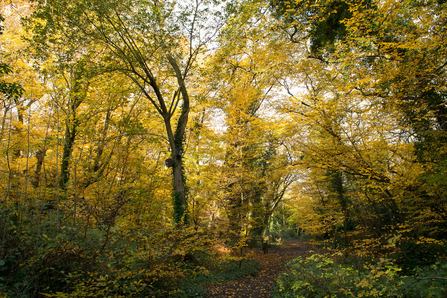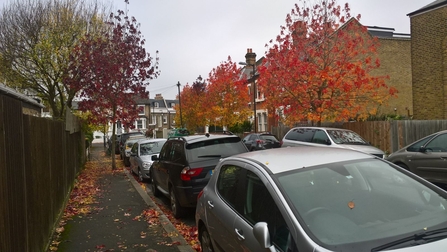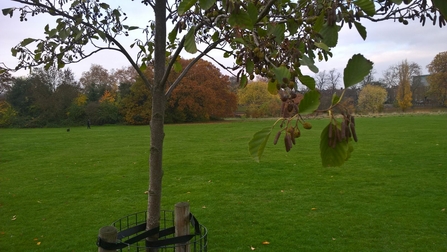London Wildlife Trust launched the Great North Wood project in 2017, supported by Heritage Lottery Fund, and now works with volunteers, community groups, landowners, and councils, to revive and reimagine this ancient landscape as a home for nature and people.
In the woods
A walk through these autumnal woods is a grand tour through an explosion of colour. Hues of yellow, red, brown and green can be seen in varying combinations as leaves flutter gently down to carpet the woodland floor. But why have the leaves turned yellow? In fact, why were they ever green in the first place?
Our schooldays taught us how plants use chlorophyll to produce energy using sunlight, but chlorophyll has a ‘green gap’ – it uses the red and blue parts of the colour spectrum but green is reflected back unused. Chlorophyll is so ubiquitous in leaves that it masks other pigments that are always present. As the chlorophyll is broken down and recycled by the tree in autumn, these hidden carotenoids and anthocyanins are unmasked and show their fiery array of reds and yellows.
In the Great North Wood it is the hornbeam that steals the autumnal show. Beneath a browning oak ceiling, the delicate yellows of the hornbeam float over foundations of waxy, evergreen holly. The female holly bushes join in the colour party in the storeys above, with their adornment of festive red berries. This scene is best viewed in Dulwich Wood and Sydenham Hill Wood, close to the border between the two woods that is demarcated by a row of green wooden posts.
Stools of hazel also provide a splash of yellow throughout the Great North Wood, particularly in Beaulieu Heights, a wonderful wood off South Norwood Hill. With its more unusual mix of species, Hillcrest Wood offers opportunities to see rowans going a riotous red or sweet chestnuts presenting an autumnal palette on their outsized leaves.





